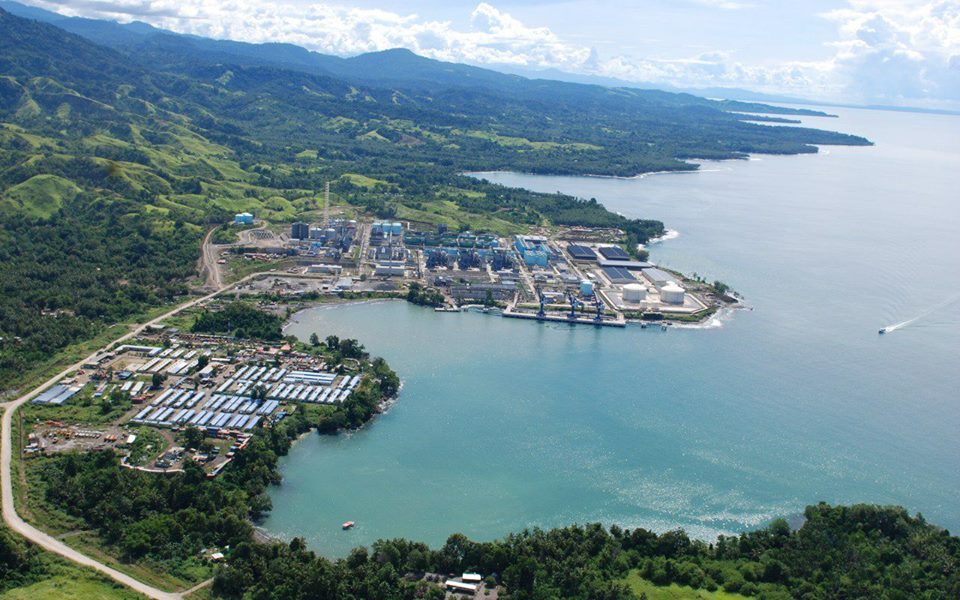
The large amounts of climate change news on specialist Pacific and Australian sites often disappoint for their lack of critical perspectives. Journalists often re-run advocacy disguised as news. Persistent storylines fashioned by international climate activists go unchallenged as they did in the period leading to the Glasgow climate summit last November. This advocacy content co-exists with other environmental reporting, some of which in the region has been exemplary.
Public relations campaigners – both government-driven and grassroots – are taught to stay on-message and filter out inconvenient or contradictory views. But journalists have no such luxury. They must go out of their way to raise difficult and disruptive points that blunt the sharp edges of international advocacy. It’s not about taking sides, it’s about professional duty. In this fourth part of The Politics of Distraction series author Steve Sharp offers a few disruptive points of his own.
The archipelagic Pacific is not the only part of the world threatened by sea level rise. For example, 400 million people living in maritime Southeast Asia are facing massive changes to their livelihoods and food security.
But because these island communities are part of larger states, such as Indonesia or the Philippines, they don’t rate as ‘small islands’ and therefore, cannot mobilise the same diplomatic clout exercised by international coalitions of small island states.
If Pacific climate diplomacy was a truly international campaign, it would make sense to spread the activism more widely than Australian energy policies – a key focus of Pacific climate campaigning in recent years. Admittedly, Japan has been a target for proposing to dump radioactive waste into the ocean, but where were the denunciations in Glasgow of India’s intervention on phasing out coal? Or non-government alliances with the fisherfolk of eastern Indonesia or coastal Bangladeshis?
Climate activists can use media diplomacy to criticise anyone they want but it needs to be proportionate and consistently spread to avoid the impression that other political agendas are at work. Such agendas are indeed at play when the global ‘climate emergency’ is portrayed as if disconnected from the complex of national laws, institutions and economic arrangements that intersect to degrade the environment. The emergency that is climate change encourages us to fixate on long-term temperature rises as a barometer of our future calamity, and look away from the immediate, observable sites of destruction which are the genesis of climate effects.
‘COP 26 failed to adequately recognise our present reality – we are facing the impacts of climate change right now,’ said a Glasgow delegate for the Fossil Fuels Non-Proliferation Treaty Initiative. ‘Yet despite their historical responsibility for our current plight, developed nations like the US, UK and Australia refused to support a funding facility for loss and damage which, in Australia’s case, presents a deep betrayal and abdication of its responsibilities to its Pacific neighbours.’
The treaty in question, among other things, calls for a ‘phase-out [of] existing production of oil, gas, and coal at the pace required to meet the 1.5C goal, and in a manner that is fair and equitable, taking into account the responsibilities of countries for climate change and their respective dependency on fossil fuels, and their capacity to transition’.
This goal is so heavily qualified that it doesn’t sound like a phase-out at all. What, for example, does a ‘just transition’ look like in Indonesia – the world’s largest exporter of coal by volume?
Likewise, the Papua New Guinea government has been pushing for a greater stake in its gas fields. It’s not doing this to phase them out. The prime minister said he expects PNG to be exporting LNG for 20 to 30 years.
Ironically, if fossil fuel export-dependent countries like PNG are judged to have a lower ‘capacity to transition’, this will be good news for Exxon Mobil, Santos and other fossil fuel giants who are at the core of the global fossil fuel lobby – the same lobby whose huge turnout at COP26 caused treaty advocates so much despair.
The non-proliferation treaty objectives are further complicated by the argument that exporters of coal, oil and gas share responsibility for harm caused by burning of their products in receiving countries. If Australia’s mining giants are ‘accessories to the crime’ for their coal consumed in China, why is the same label not applied to Melanesian states who have chosen minerals and energy as an export-led development path?
There are also inconvenient facts such as the transition away from combustion fuels has fired a boom in nickel mining and processing to provide a key component of electric car batteries. This has re-ignited a longstanding environmental struggle over mine waste disposal in general and the dumping of mine tailings in the sea in particular (known as DSTD – deep sea tailing disposal).
The boom is centred in Indonesia – the largest producer of nickel – and the fisherfolk of its eastern islands appear to be the main losers as miners and processors seek approval to expand DSTD. They have supported the disposal method by pointing east to the Chinese-owned Ramu nickel operation near Madang on Papua New Guinea’s north coast, which has been dumping 4.5 million tonnes of its waste into Astrolabe Bay each year since 2012.
The mine waste controversy is global but the nickel boom will play out in the bio-diverse Coral Triangle encompassing air pollution from smelters, on-shore water pollution from dam spills and the still unknown long-term impacts of deep-sea dumping on marine life and coastal livelihoods.
These factors at the very least deserve to be part of the climate change conversation as they interact with climate-induced sea temperature rise. Just as foreign governments need to account for their emissions policies within the UN framework, Pacific nations need to regulate foreign resource projects within their own sovereign borders and account for the successes and failures along the way.
